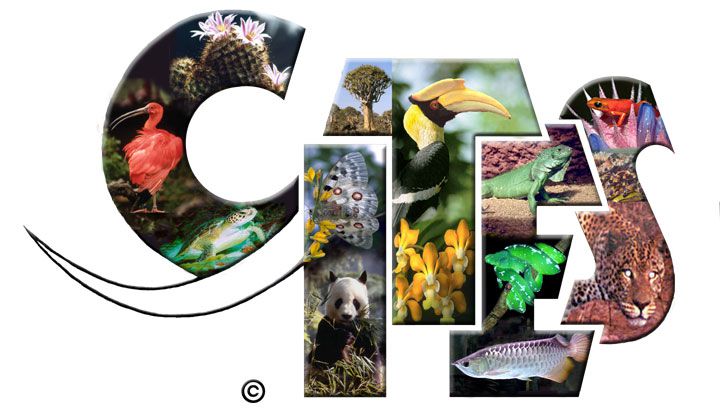-
 Introduced species
Introduced species
-
 Rydberg atom
Rydberg atom
-
 Recessive
Recessive
-
 Magnitude
Magnitude
-
 OPEC
OPEC
-
 Lavender
Lavender
-
 FEAL
FEAL
-
 Calcium carbonate
Calcium carbonate
-
 Fan-coil unit
Fan-coil unit
-
 Zooplankton
Zooplankton
-
 Traditional medicine
Traditional medicine
-
 Proctoscopy
Proctoscopy
-
 Electronic configuration
Electronic configuration
-
 Moonquake
Moonquake
-
 E85
E85
-
 Ion
Ion
-
 Triangle galaxy
Triangle galaxy
-
 CD-R
CD-R
-
 Heterozygote
Heterozygote
-
 Sonoluminescence
Sonoluminescence
-
 Whitebeam
Whitebeam
-
 Chalcogenide
Chalcogenide
-
 Marburg fever
Marburg fever
-
 M87
M87
-
 Granivore
Granivore
-
 Lava dome
Lava dome
-
 Digital signature
Digital signature
-
 MD5
MD5
-
 Proteoglycan
Proteoglycan
-
 Jupiter
Jupiter
Washington Convention
The Convention on International Trade in Endangered Species of Wild Fauna and Flora (CITES), or more simply the Washington Convention, was adopted in 1973 and entered into force in 1975. It regulates international trade of species to ensure their survival.
This international treaty concerns flora and fauna, both in the form of living specimens (for pet shops, zoos, etc.) as well as in the form of derived products (e.g. wood objects, fur, traditional remedies).
Species classification
Over 34,000 species are thus taken into consideration by this Convention, depending on their state of conservation and endangerment. These species are classified in three appendices, which determine to what extent each species can be used and traded.
- Appendix I species are those threatened by extinction. They can only be traded under exceptional circumstances, such as for scientific research or population management (overpopulation, reintroduction).
- Appendix II species are species whose state of conservation or over-exploitation can threaten their survival.
- When members countries of the convention want to regulate trade in their protected species, these species are listed in Appendix III.
The legal framework
In all cases, the trade of species from each appendix requires export permits (or re-export permits) which are issued by management organisms in the exporter countries. Only creatures that are legally obtained, without compromising the survival of the species can apply for these permits.
The 175 member countries to this convention are required to respect the legal framework and CITES procedures in order to reconcile sustainable trade of species and conservation of biodiversity
 The logo of the Washington Convention on its 35th anniversary. © Cites
The logo of the Washington Convention on its 35th anniversary. © Cites
Latest
Fill out my online form.



